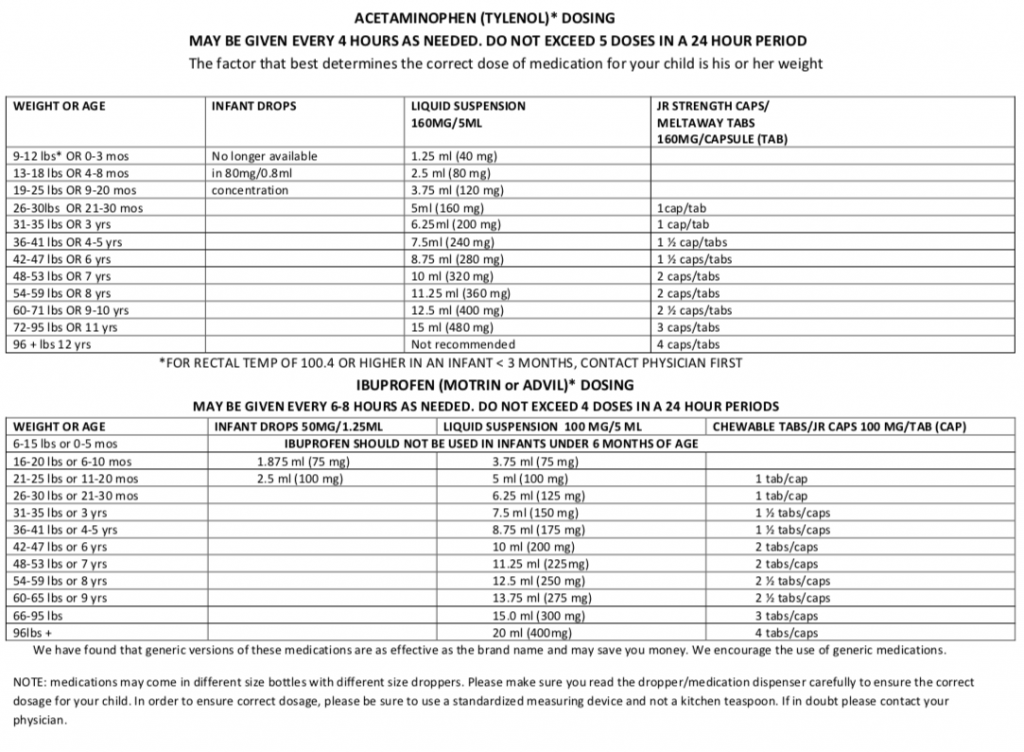Featured Video
Fever is the body’s normal response to infections and plays a role in recovery from illness.
Your child has a fever when their temperature is over 100.4°F (38°C)
- We recommend a rectal temperature for all infants under the age of 1 year as it is the most accurate.
- Generally temperatures taken under the arm (axillary) are 1 degree F lower than actual body temperature.
- If you are using an ear thermometer (tympanic) or forehead scanner please read the instructions to ensure you are using properly. Many can be inaccurate and in some cases (particularly forehead scanner) quite variable. If using these products and questioning the reading, we recommend that you take the temperature 3 times to determine an average reading.
- We do not recommend fever strips or pacifier thermometers as they tend to be inaccurate in children.
Remember that fever is helping your child fight infection. Use fever-reducing medications such as acetaminophen (Tylenol) or ibuprofen (Advil or Motrin) only if the fever is above 102°F or if your child is uncomfortable. Please see the chart below for correct dosing. For accuracy of dosing, we recommend using medication syringes or other measurement devices provided with the medication rather than household spoons. Medications usually don’t bring temperature down to normal but will decrease it by at least 1-2 degrees within one hour of administration. Your child will continue to spike fevers until the illness runs its course. Encourage your child to drink extra fluids, as body fluids are lost during fever. Heat is lost through the skin so clothing should be kept to a minimum.
DO NOT GIVE ANY FEVER REDUCER TO AN INFANT LESS THAN 3 MONTHS OLD – CALL THE OFFICE IMMEDIATELY.
Febrile seizures are extremely rare. If your child should have a seizure, go immediately to the emergency room.
Call the office if:
- Your child is less than 3 months of age and has a rectal temperature of 100.4°F or higher.
- The fever is over 105°F.
- Your child has difficulty breathing.
- Your child complains of a stiff neck AND cannot put his chin to his/her chest without pain.
- Your child has purple spots on his/her skin that don’t blanch (turn white) when you press on them.
- Your child has a fever for more than 3 days.
- You have concerns.

